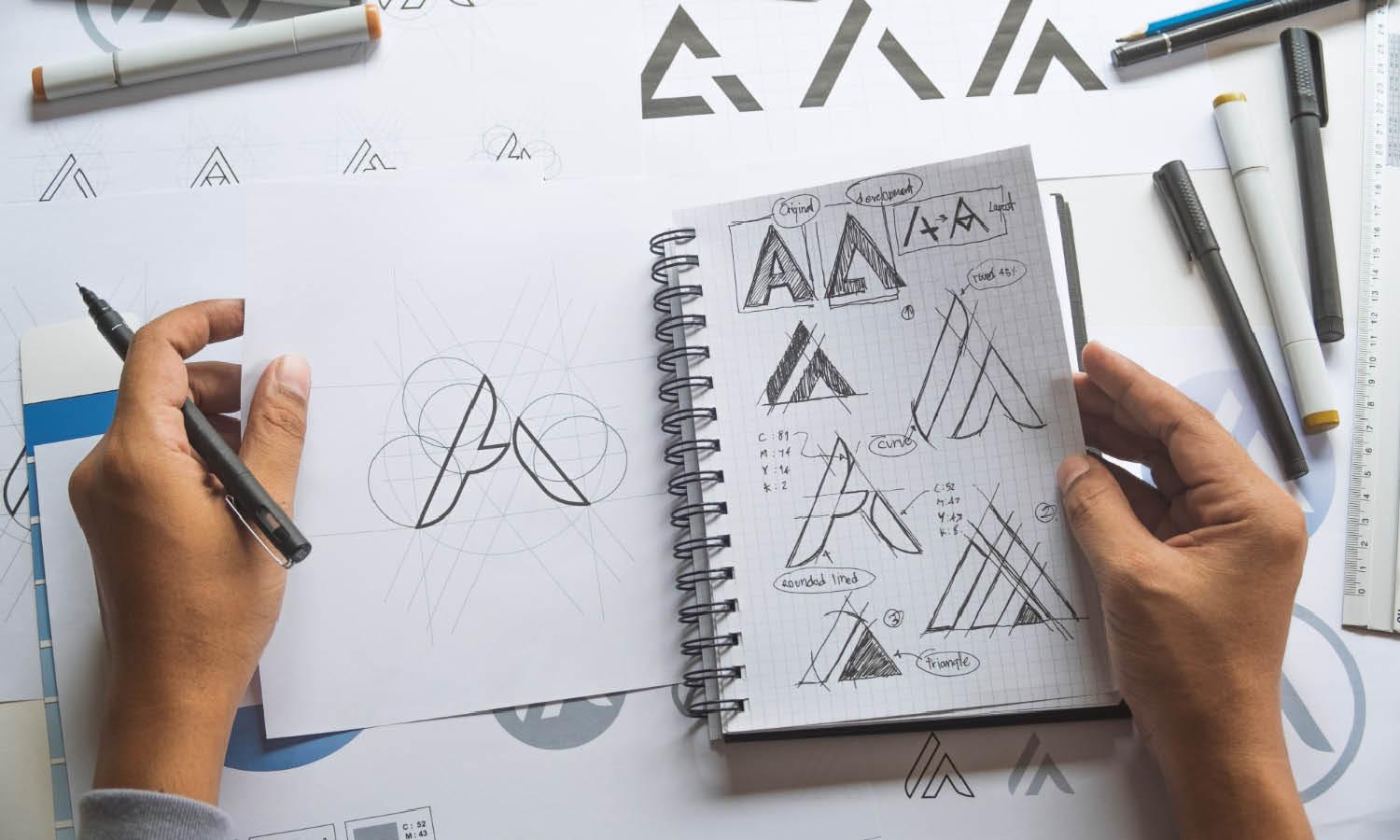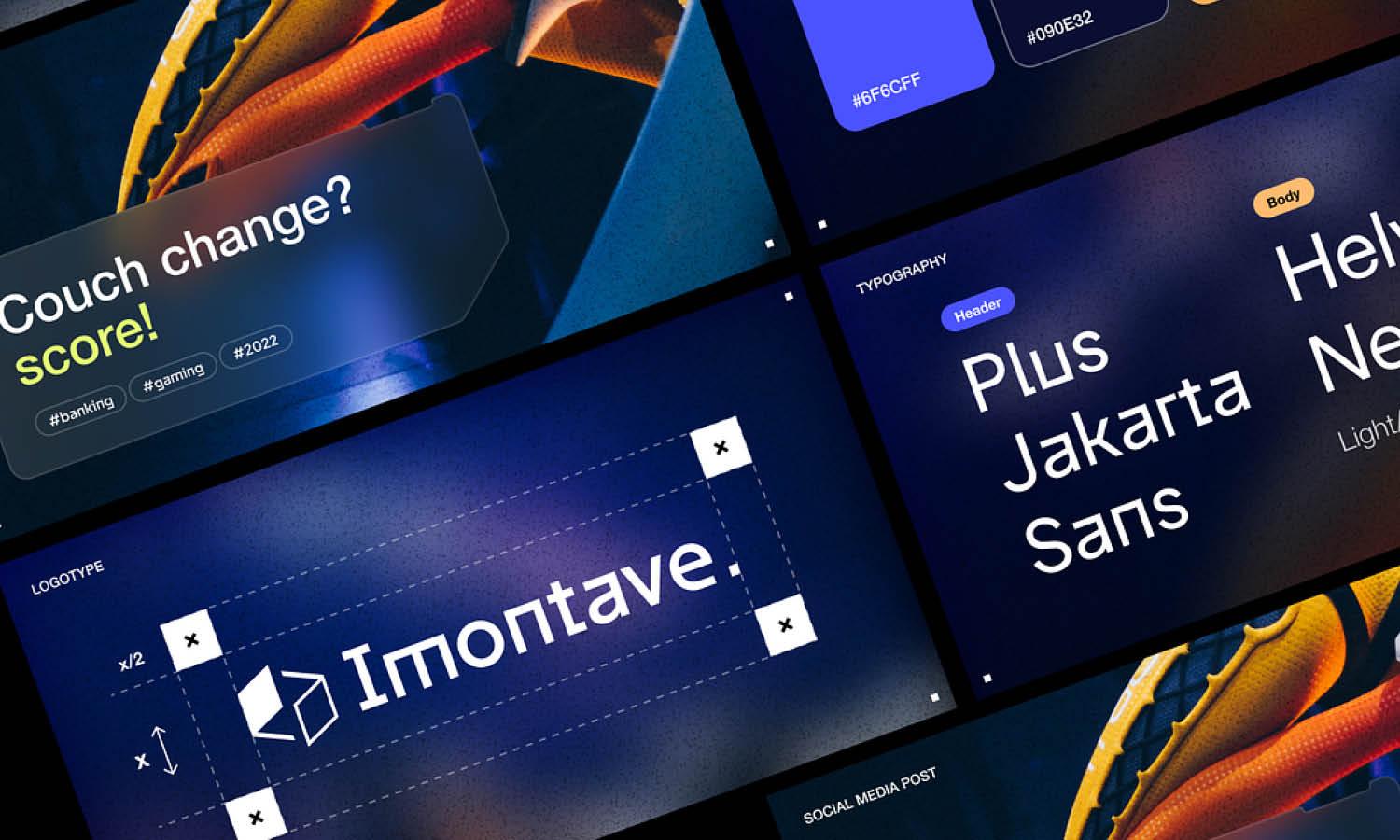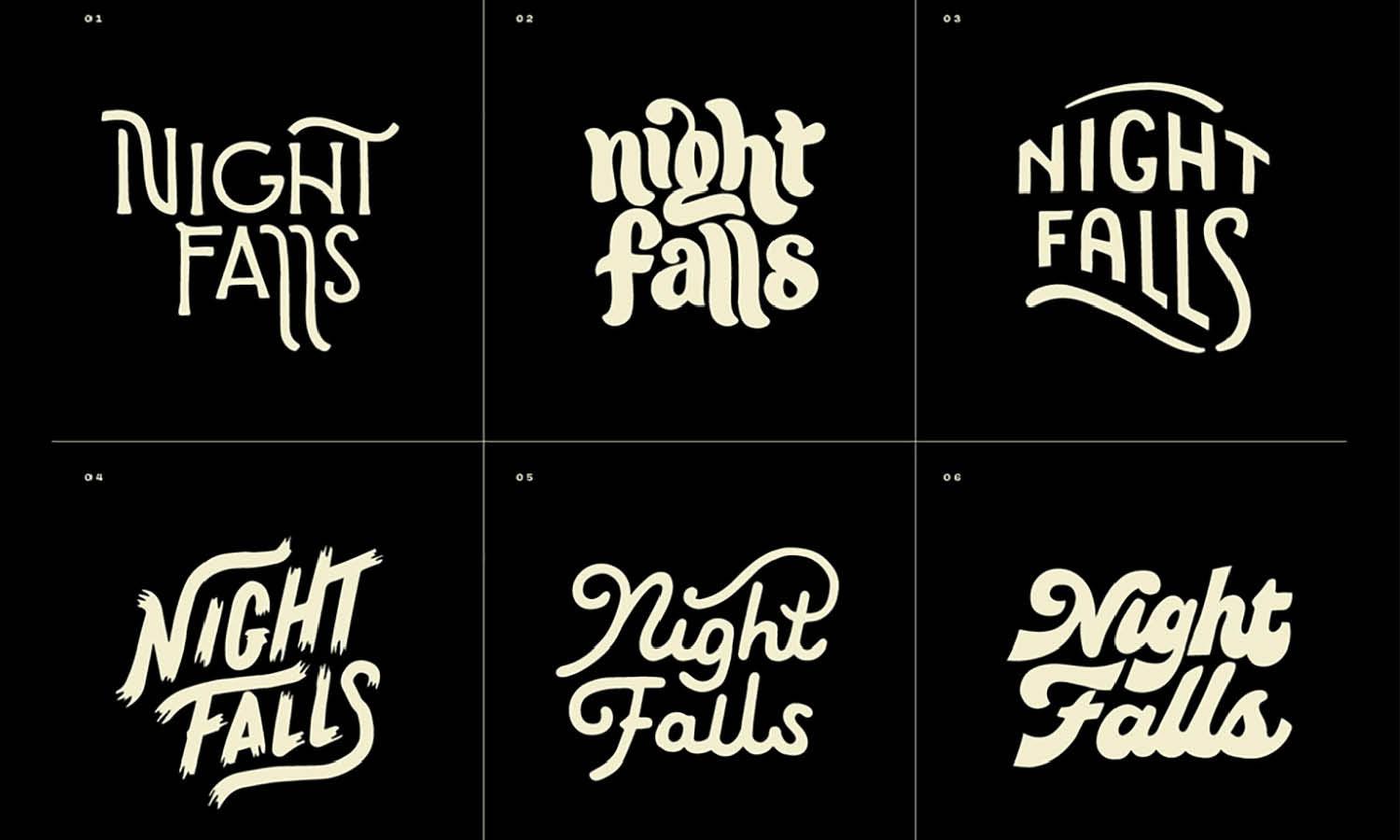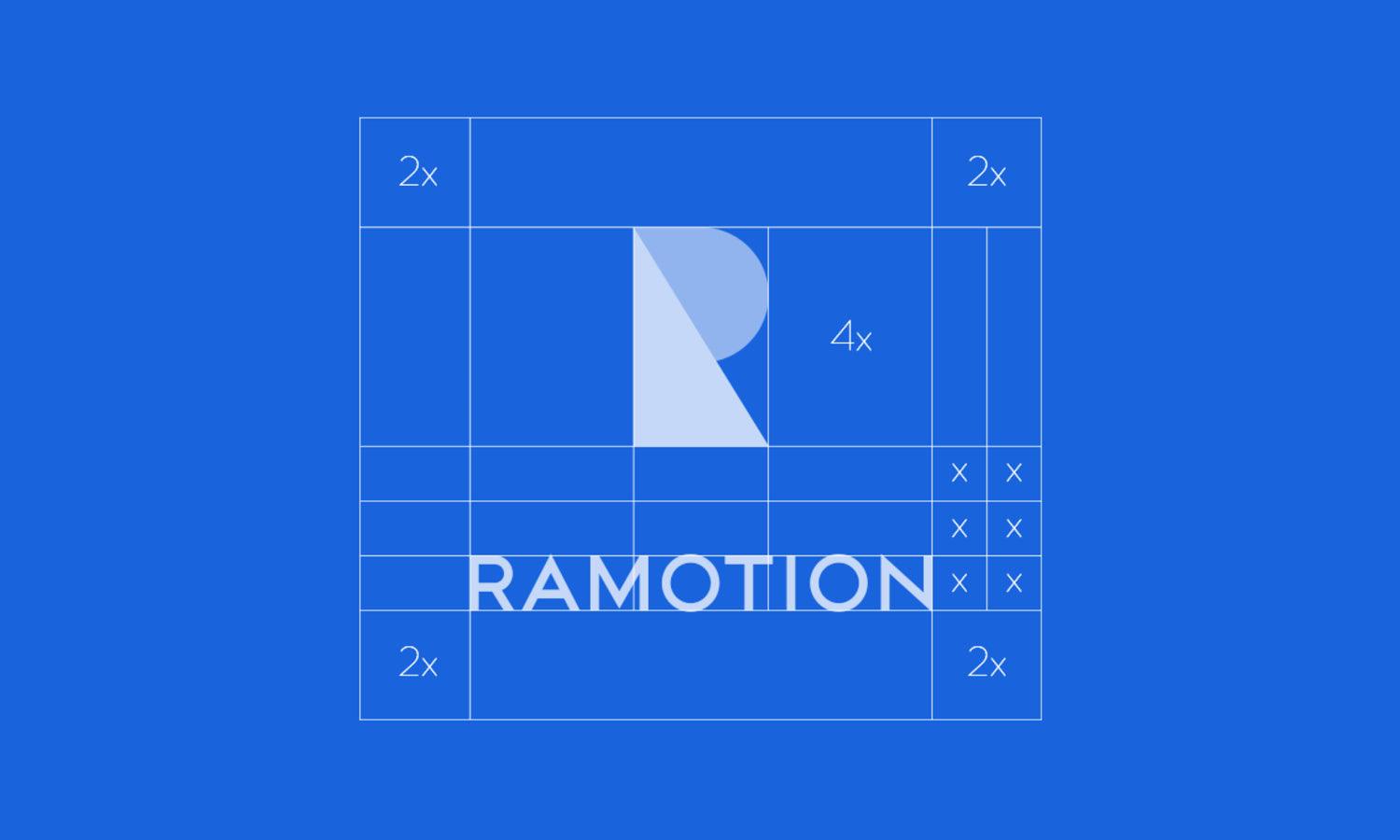Here’s How to Draft & Refine Your Logo Design to Perfection

Source: Ramotion, MetaSpark Logos, Logo Mark, Modern Design Creative Concept, Dribbble, https://dribbble.com/shots/16597200-MetaSpark-Logos-logo-mark-modern-design-creative-concept
Creating the perfect logo is both an art and a science. It begins with a deep understanding of the brand and evolves through a meticulous design process. The ability to draft and refine a logo that perfectly encapsulates a brand's essence is a crucial skill for any designer. This article will guide you through the detailed steps involved in drafting and refining your logo design, ensuring that you not only meet but exceed your clients' expectations.
The journey from a preliminary draft to a polished logo involves multiple stages of development, each requiring a keen eye for detail and a deep understanding of design principles. From initial research and sketching to digital refinement and testing across various media, every step is vital. The goal is to create a logo that is not only visually appealing but also versatile and emblematic of the brand’s identity.
This guide will provide you with actionable tips and techniques to enhance your workflow and achieve perfection in your logo designs. By following these carefully outlined steps, you can ensure that your final product resonates with the intended audience and stands the test of time.
Research the Industry
When embarking on a logo design project, conducting thorough industry research is essential. This initial step ensures that your design not only stands out but also aligns with industry standards and expectations. Start by analyzing the logos of leading competitors within the target market. Note what design elements are common, such as color schemes, typography, and imagery. This insight helps you understand what resonates with the audience in that sector.
Next, delve into the broader trends affecting the industry. Are there emerging themes or technologies that could influence design choices? For instance, a tech company might lean towards a minimalist and modern aesthetic to convey innovation. Understanding these trends can position the logo you design at the forefront of these developments, making it both current and relevant.
Additionally, consider the cultural aspects of the industry. Certain colors or symbols may have specific connotations that can either enhance or detract from the brand’s message. This cultural context is crucial when designing for markets in different geographical areas or with distinct cultural backgrounds.
By integrating this comprehensive research into your logo design process, you create a draft that not only looks appealing but also communicates the right message. This thoughtful approach ensures your logo design will be well-received within the industry, setting a solid foundation for the subsequent stages of design refinement.
Brainstorm Ideas
Brainstorming is a dynamic and creative stage in the logo design process. It is where all ideas, no matter how unconventional, are welcomed and explored. Begin with a clear mind and a focus on the brand’s core values and personality. Utilize various brainstorming techniques such as mind mapping, word association, or even doodling to unlock creative insights. This free-flowing approach helps in uncovering unique concepts that might not surface in a more structured setting.
During this phase, quantity over quality is key — aim to generate a wide array of ideas. Sketch rapidly, allowing each concept to evolve naturally. This method ensures a broad range of designs from which the most promising can later be refined. Consider different logo types, such as emblematic, wordmark, or abstract, and experiment with how these could represent the brand.
It’s also beneficial to involve team members or stakeholders during brainstorming sessions. Collaborative input can bring diverse perspectives, enriching the creative pool and enhancing the relevance of the designs to the brand. Encourage all participants to contribute, ensuring that each idea is considered without immediate critique.
This stage is critical for setting the stage for a successful logo draft. By allowing creativity to flow unrestricted, you can ensure that the subsequent drafts are not only innovative but also deeply aligned with the brand’s identity. Once the brainstorming session is complete, the best ideas can be selected and refined to perfection in the drafting phase.
Create Mood Boards
Creating mood boards is an instrumental step in the logo design process. This visual tool helps to compile and organize the aesthetic elements that will inspire and shape the final logo design. Start by gathering images, color palettes, typography, textures, and any relevant design motifs that resonate with the brand's identity.
Use digital tools or physical boards to arrange these elements. Platforms like Pinterest, or design software such as Adobe XD and Canva, offer excellent environments for building digital mood boards that can be easily shared and modified. When selecting items for your mood board, focus on aligning with the brand’s core values and the emotions you wish to evoke in the target audience.
This collection should not only inspire but also serve as a tangible reference that ensures consistency throughout the design process. It aids in communicating the visual direction to clients and stakeholders, making it easier to convey your ideas and receive more targeted feedback.
Incorporating a diverse range of elements can lead to a more comprehensive mood board. Include potential logo applications, competitor logos for contrast, and any industry-specific visuals that could influence your design. The mood board is not just a collection of ideas; it's a strategic tool that guides the visual narrative of your logo, ensuring that every element contributes to a cohesive brand message.

Sketch Multiple Drafts
Sketching multiple drafts is a crucial phase in refining your logo design. This stage allows you to translate the abstract ideas from your brainstorming sessions and mood boards into tangible concepts. Begin with quick, rough sketches to capture the essence of your ideas without worrying about perfection. Use a pencil and paper to freely explore different arrangements, styles, and compositions.
The key is to produce a variety of designs, experimenting with different logo types like symbolic, typographic, or combination marks. Consider how each sketch might be perceived at various sizes and in different contexts, such as digital, print, or merchandise. This flexibility can significantly impact the logo's effectiveness.
As you sketch, keep the client's needs and the brand identity in focus. Each draft should aim to communicate the brand's message clearly and distinctively. Move from broad strokes to finer details as you refine your sketches, focusing on elements that best align with the brand’s personality and industry expectations.
After developing a sufficient range of drafts, evaluate each one based on its aesthetic appeal, originality, and relevance to the brand. Select the most promising designs to develop further digitally. This iterative process of sketching and refining helps hone your creative ideas into a final design that is both innovative and representative of the client’s brand.
Select the Best Ideas
After the creative outpouring of sketching multiple drafts, the next crucial step is to select the best ideas to develop further. This selection process involves a critical evaluation of each concept against the brand’s goals and the target audience's preferences. Start by reviewing all sketches and quickly eliminate those that do not align well with the brand’s identity or fail to communicate the intended message effectively.
Focus on the designs that are not only visually appealing but also embody the brand’s essence. Consider factors like uniqueness, adaptability across various media, and potential for longevity. It's beneficial to involve the client at this stage to gauge their preferences and obtain feedback, which ensures that the chosen concept resonates with their vision.
Prioritize ideas that have the strongest potential to stand out in the market while still adhering to the core attributes of the brand. It may be helpful to categorize the remaining designs based on their feasibility and impact, ranking them to facilitate decision-making.
This phase is about narrowing down to the designs that offer a compelling narrative about the brand and can be envisioned as a part of the larger brand strategy. The selected designs should move forward to the digital refinement stage, where they can be polished and tested in various formats to ensure they meet all the functional and aesthetic requirements of a successful logo.
Develop Initial Designs
Once the best ideas are selected, the next step is to develop these sketches into initial digital designs. This stage involves using graphic design software to create cleaner, more precise versions of your chosen sketches. Tools like Adobe Illustrator are ideal for this purpose, as they allow for manipulation of vectors, which are crucial for scaling logos to different sizes without losing quality.
Begin by importing your refined sketches into the software and using them as a base to build your digital drafts. Pay attention to the finer details such as line thickness, font choices, and color schemes. These elements are crucial in conveying the right brand message and ensuring the logo’s versatility across various applications.
During this development phase, experiment with different variations of your design. Adjust the color palettes, switch up the fonts, and tweak the imagery to see how these changes affect the perception of the logo. It’s important to keep the design simple yet impactful, ensuring it is easily recognizable and memorable.
Consider the technical aspects of logo design as well, such as ensuring the logo is legible in both large and small scales and effective in both color and black and white. This versatility is vital for a logo’s application across different media and marketing materials.
Get Feedback Early
Seeking feedback early in the logo design process is a pivotal step that can significantly influence the outcome of your project. Once you have developed initial designs, present these options to the client and possibly a broader audience that might include potential users or stakeholders. This early feedback phase is crucial for gauging reactions and ensuring the design aligns with the brand’s vision and audience expectations.
Prepare a presentation that not only showcases the designs but also explains the rationale behind each choice, including how they reflect the brand’s values and objectives. Encourage honest feedback by asking specific questions about the designs' visual appeal, relevance, and overall impact. This can be structured as a formal survey or an informal discussion, depending on the context and the client's preferences.
Incorporate tools and techniques such as A/B testing or online forums where the target audience can provide their impressions. Such direct insights can reveal unforeseen reactions and provide a real-world sense of how the logo might be perceived.
This feedback is invaluable as it provides a real-time lens through which to view your designs, highlighting strengths and areas for improvement that may not have been apparent initially. Use this feedback to refine your concepts, ensuring that the final logo will be well-received and effective in its intended market.

Refine Your Designs
Refining your designs based on the feedback received is essential for achieving a polished and effective logo. This stage involves making detailed adjustments to improve the design’s aesthetic quality and its alignment with the brand’s messaging. Focus on the elements that received positive feedback and revise those that did not resonate well with the audience.
Begin by addressing any concerns about legibility or scalability that might have been highlighted. This might involve simplifying the design to ensure it is effective across various applications, from digital media to print. Pay careful attention to color adjustments, typography, and symbolic elements to enhance the logo’s visual impact and ensure consistency across all brand touchpoints.
Utilize design software to tweak the finer details, such as the spacing, alignment, and proportion of the logo elements. Small changes can often make a big difference in the overall effectiveness of a design. Consider multiple variations of your refined logo to see which adjustments work best in practical scenarios.
Additionally, revisit the mood boards and original brand guidelines to ensure that the refinements still align with the intended brand identity. It's crucial that the final design not only looks appealing but also communicates the brand’s values and appeals to its target audience.
Simplify the Design
In logo design, simplicity is key. A simple design not only ensures legibility across various sizes but also fosters an immediate connection with the audience. When simplifying a logo design, focus on distilling the design to its most essential elements. This involves removing any superfluous details that do not contribute to the logo’s immediate recognition or to the conveyance of the brand’s identity.
Begin by evaluating each element of the logo—every line, shape, and color. Ask yourself whether each component is essential to the logo’s message. If not, consider how its removal might make the logo cleaner and more impactful. For instance, complex gradients can be replaced with solid colors, and unnecessary graphical elements can be streamlined or eliminated.
Focus on making the logo as readable as possible, especially at smaller sizes. This often means opting for bolder lines and ensuring there is sufficient contrast between the logo and its background. The simpler the logo, the more versatile it is, adapting seamlessly from a digital screen to physical merchandise.
A well-simplified logo not only stands out better but is also more memorable to the audience. It communicates the brand’s essence quickly and effectively, making it a powerful tool in the brand’s visual identity. This refinement process is crucial for creating a logo that is not only beautiful but also functional across various applications.
Test Across Media
Testing your logo across different media is a critical step in ensuring its effectiveness in all possible applications. A logo might look great on a digital screen but may not translate well to print or merchandise. To avoid such issues, it's important to evaluate how your logo performs in various formats, including digital, print, large-scale advertisements, and even on promotional products.
Start by creating mock-ups of your logo in different use cases. For example, see how it looks on a business card, a website header, a billboard, and company swag like T-shirts and pens. This testing helps identify any issues with scalability or color inconsistencies that might not be apparent on a computer screen alone.
Pay attention to how the logo appears in both color and black and white, as well as its legibility at very small or very large sizes. Adjustments might be necessary to ensure that the logo remains effective and legible across all these different applications. For instance, you might need to simplify elements of the design or adjust the color palette to maintain visibility and impact.
This phase of testing across media is essential not just for aesthetic consistency but also for functional adaptability. It ensures that the logo serves its purpose of brand recognition and positive association in every context in which it appears.
Conclusion
Drafting and refining a logo to perfection is a strategic endeavor that demands creativity, precision, and a deep understanding of the brand it represents. By following the steps outlined—from initial research and brainstorming to simplifying the design and testing it across various media—you ensure the development of a logo that is not only visually appealing but also functionally versatile. This methodical approach enhances your ability to produce a logo that truly resonates with the target audience and stands the test of time, establishing a strong and enduring brand identity.
Let Us Know What You Think!
Every information you read here are written and curated by Kreafolk's team, carefully pieced together with our creative community in mind. Did you enjoy our contents? Leave a comment below and share your thoughts. Cheers to more creative articles and inspirations!















Leave a Comment